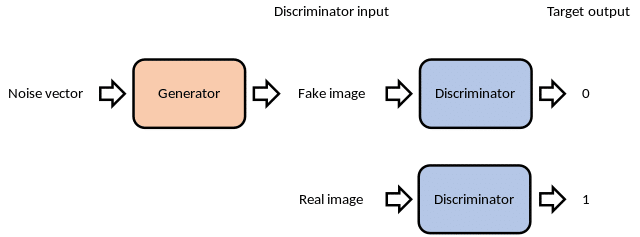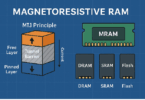What is GaN? A machine learning or ML model refers to a file that is capable of identifying patterns in information. These types of models follow a machine learning algorithm as guidance and are trained on a set of data. You can use these models to automate the continued decision-making processes. Moreover, GaN helps to sort information, predict something & generate new data samples.
For instance, you are willing to recognize certain people in order to train a home security camera. You can give your family pictures to this model & label them as non-threatening. An ML or machine learning algorithm gives instructions to the camera to withhold security alerts once it detects someone in the non-threatening data set. Therefore, you no longer receive security alerts for each detected movement. Rather than that, you will only get security alerts for motion detection that outsiders cause. Let’s dig into the article to learn what is GaN and more details about it.
What is GAN?
GAN, or Generative Adversarial Network, is a kind of machine learning model which is known as a neural network. Its aim is to imitate the human brain’s structure & function. And for this purpose, it was designed specifically. That’s why the neural networks in machine learning are sometimes called ANNs or artificial neural networks. This technology can be considered as the basis of deep learning. You should know that this one is a subcategory of machine learning. It helps to recognize complex patterns in different data types like images, sounds, & text.
What is The History Of GANs?
Ian Goodfellow and his colleagues published a paper on GANs in 2014 that suggested a new framework for unsupervised learning. Hence, in order to compete against each other, two neural networks are trained. Since that time, GANs have become a very popular neural network that is used widely for generative modeling. In recent years, these have been beneficial for data augmentation. Also, these can help you in reinforcement learning, & semi-supervised learning techniques.
Types of GANs:
Researchers continue to identify new use cases for these models. They are still improving upon existing GAN techniques. These are the various types of GANs:
CycleGAN: These focus on image-to-image translations. The training data is made of two unconnected data sets or groups of images without any labels or correspondences. This information is used by CycleGan in order to learn how to transform images from one set to another set. For instance, you gave a CycleGAN containing two sets of images. One picture has house cats, whereas another one depicts tigers. So when you get the output, you may see a house cat with tiger stripes. Otherwise, you will see the inverse picture that depicts a house-cat-sized tiger.
Super-resolution GANs: These fill details into a picture’s blurry areas, and thus, these can increase the image resolution. And it is done with the perceptual loss function. This technique measures the difference between the top-quality perceptual features of two pictures.
How Do GANs Work?
You should know that this network is a kind of AI model. The two separate neural networks that the architecture of GNA consists of, are pitted against each other in a game-like scenario. While we know the first network as the generator network, the second one is called the discriminator network.
The function of the generator network is to make fake data that resembles real. And the second one refers to CNN or convolutional neural networks. It is able to distinguish between data that GAN generates (fake data) & real data. Learning how to classify these examples is possible by the network. You can use the information to adjust the generator network. Thus, it can generate more realistic data— indistinguishable from real data.
Generative adversarial nets get training until they come to the endpoint when they are unable to improve. The reason is that the generative distribution is equal to the data-generating distribution. The discriminator can’t differentiate the two distributions.
Gradually, the generator gets better performance when creating fake data, which fools the discriminator. At the same time, the discriminator gets better performance while distinguishing between fake & real data. In simple terms, creating fake data is the main target to make it look real so that it can fool even the generator and the discriminator. GANs attempt to replicate a probability distribution. Hence, the loss function is used. Its task is to reflect the distance between the distribution of fake data & real data.
Advantages Of GANs:
- These are unsupervised learning models that train themselves after the initial input. They can learn from unlabeled data.
- These can identify anomalies depending on measurements that indicate how both the discriminator and generator can model the data.
- It can produce realistic data samples.
Disadvantages of GANs:
- Because of the requirement of large advanced data sets, these are challenging to train.
- Based on any particular task’s complexity, it is hard to evaluate results.
- Because of the high plausibility & the capability of tricking the discriminator, GANs suffer from mode collapse.
What Are Some Use Cases Of Generative Adversarial Networks?
Its architecture is equipped with many applications across various industries. Let’s see a few instances.
Generate Images:
GANs produce realistic images via text-based prompts. Or these help to modify existing images. Such images are able to generate realistic & immersive visual experiences in digital entertainment & video games.
Editing images is also possible by GAN. For instance, it helps to convert a low-resolution picture to a high resolution. Moreover, it can turn a black-and-white photo into a color. Additionally, it helps to generate realistic faces, animals & characters for video & animation.
Generate Training Data For Other Models:
Data augmentation in ML uses existing data to generate modified copies of a dataset. Thus, it can boost the training set artificially.
In order to generate synthetic data with real-world data attributes, you should use generative models for data augmentation. For example, fraudulent transaction data can be made, that helps to train another ML system that can detect fraud. Also, the data teaches the system to distinguish between genuine & suspicious transactions.
Complete Missing Information:
You might be willing to use the generative model to guess accurately & to complete a few missing pieces of information in a dataset. For example, you are able to train GAN with the aim of creating photos of surfaces that are below ground by understanding the correlation between surface data & underground structures. Once it learns about the sub-surface images, it will be able to generate new ones. In this case, it uses terrain maps for different energy applications such as geothermal mapping or carbon capture.
Generate 3D Models From 2D Data:
It helps to create 3D models from any scanned pictures or 2D photos. For example, the GAN can generate realistic photos of organs for any kind of surgical planning. And to do so, X-rays & other body scans are combined by GAN.
The Bottom Line:
Generative Adversarial Networks, which is a new field in Artificial Intelligence Domain, can shock everyone with the application & outcomes of it. In this field, researching is going at peak and much more new application in the field will come soon. So, it is important to have basic working knowledge of these new techniques. The upcoming application & research areas of this field will include creating different interior designs, molecular formulas, colors, and so on. GAN is such a technique that is able to provide machines an imagination.
Frequently Asked Questions
What is a GAN used for?
This is one of the most recent innovations in machine learning. These help to produce new data instances that resemble your training data.
What is a GAN tool?
It refers to a class of machine learning frameworks.
What is GAN known as?
It is called Generative Adversarial Network.







